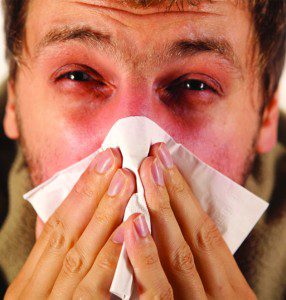Here are five tips you may not have heard before about cleaning your home for cold and flu season:


Dirt and grime prevent disinfectants from doing their work by shielding microorganisms from contact with active disinfecting agents. Some types of dirt actually consume or impair the active ingredients in disinfectants and – because no germ kill is 100% – dirt can also help germs to regenerate after disinfecting is complete. To ensure dirt and oily soils are removed completely before disinfecting, be sure to choose a cleaning solution that is designed to bond with dirt and oils and suspend them in water. Also, be sure your cleaning rags have the absorbency needed to remove dirty water from the surface you are cleaning.
Understand that there is a huge difference between sanitizing and disinfecting.
Sanitizing implies 99.9% germ kill during hard surface cleaning while disinfecting implies germ kill of 99.999%. The difference: proper sanitizing results in a 1,000-fold reduction in human exposure to germs while disinfecting results in a 100,000-fold reduction. While disinfecting all the time in your home would be far too extreme, you should try to use a disinfectant on commonly touch surfaces – such as door handles, faucets, and light switches – during local flu outbreaks or when someone in your family is actively suffering from the flu in order to kill living germs that may be lurking on hard surfaces. Outside of cold and flu season, sanitizing should suffice.
Pay close attention to the language in
cleaning solutions’ claims.
For example, “prevents or eliminates mold and mildew” is very different from “kills viruses that cause common colds and flu.” The EPA registers and tests products sold as disinfectants and sanitizers, so if a cleaning solution claims to be a disinfectant, it MUST kill cold and flu viruses.
Read and follow instructions.
Cleaning solutions sold for use in homes often double as sanitizers and disinfectants. The difference comes in the way that you use them. Instructions on a canister of common disinfecting wipes state that to sanitize a hard surface, you need to ensure the surface stays wet with cleaning solution for a minimum of 10 seconds. To disinfect the surface, it has to stay wet with cleaning solution for a full 10 minutes and be allowed to air dry (rather than being wiped).
Choose the right tools.
Pre-moistened disinfecting wipes may not be the most economical or effective choice as they don’t necessarily deliver enough cleaning solution to ensure sanitizing or disinfecting levels of germ kill on hard surfaces. (Again, the fine-print instructions actually state that multiple wipes are needed to deliver sufficient quantities of solution for disinfecting). Meanwhile, if you opt to use disinfecting sprays or liquids with reusable rags, be sure to avoid cross contaminating your surfaces by using one colored rag exclusively in your bathroom, another exclusively in your kitchen, and so forth.
Bottom line:
Clean first, disinfect second – and only at times and in places where it is really necessary. When you do decide to disinfect, follow procedural instructions exactly.
Otherwise, you will just be wasting your time and money without reaping the intended health benefits.
239.596.5200 Naples
239.437.5527 Ft. Myers
239.206.2881 Marco Island
 Southwest Florida's Health and Wellness Magazine Health and Wellness Articles
Southwest Florida's Health and Wellness Magazine Health and Wellness Articles
